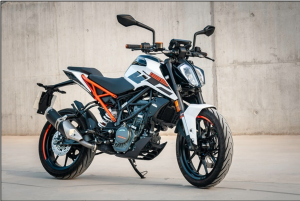Lesson Three: Motorcycles (6.3)
Motorcycles are unique because they must follow the same traffic laws as cars but are also vulnerable roadway users. They are smaller than cars and can fit into a driver’s blind spots. This makes it even more crucial to check your rear and blind spots before making any lateral or reverse movements.
Why are Motorcycles Vulnerable?

There are a variety of designs of motorcycles. Some are more easily seen than others due to their headlight type, design, lane position, and speed. The type of engine influences the sound a motorcycle produces. A scooter will be quieter than a standard motorcycle, making it harder to hear in traffic.
Keep six or more seconds of following distance between your vehicle and a motorcycle. In bad weather, keep even more space. Motorcycles may change speed or adjust their lane position suddenly in response to vision and/or path restrictions. When searching for a gap, remember to allow more space when a motorcycle is present due to their speed typically being faster than it appears.
Motorcycles are challenged by many roadway conditions that can cause them to lose traction that may not affect other vehicles. When searching you must consciously train your eyes and your brain to identify motorcycles, not just cars. Riders may not always be wearing contrasting colors and may blend into the environment. Protecting motorcyclists is a shared responsibility and motorcyclists rely on other roadway users to help keep them safe.
 Motorcycles
Motorcycles
Essential Question
-
How do you interact lawfully, safely, and courteously with motorcycles?
The open space between two approaching vehicles which will afford a driver enough time to move into or through another lane of travel without interfering with other road users.
Friction or gripping power between the tire patches and the roadway surface. The grip between the tires and the road surface that allows a vehicle to start, stop, and/or change direction.